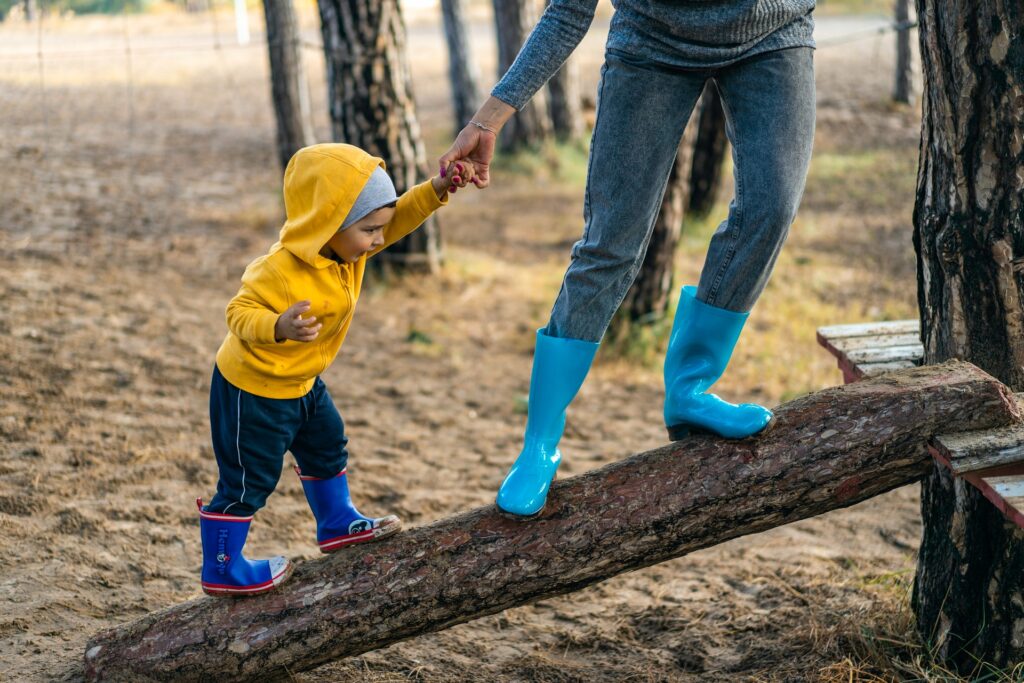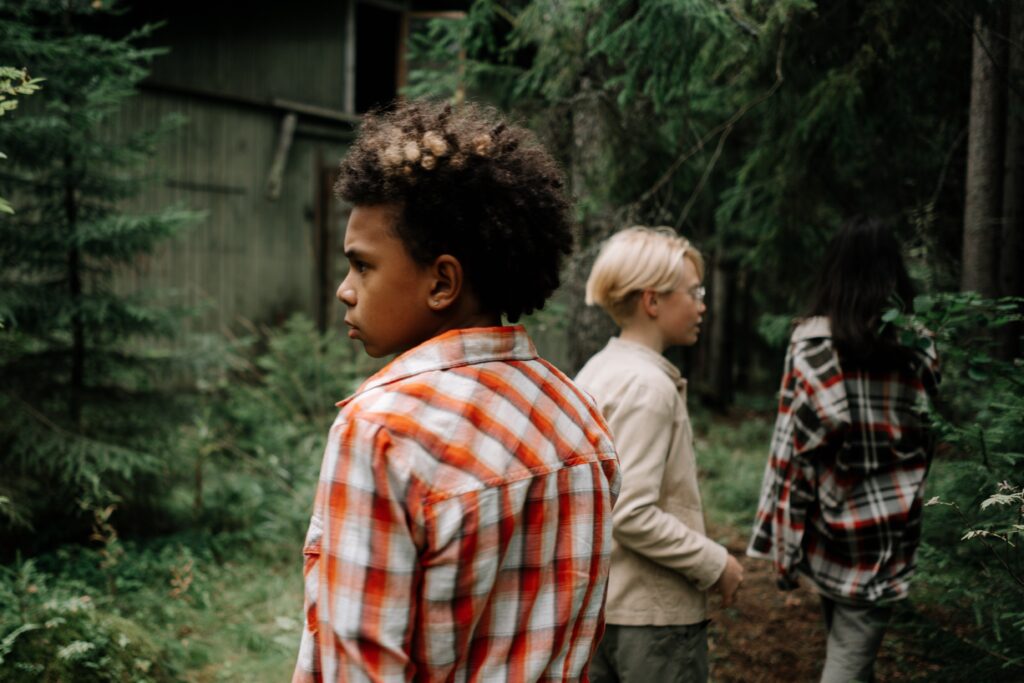My child is troubled by a traumatic event
STEPS TO TAKE DURING AN TRAUMA-RELATED EMERGENCY: Trauma may feel like a scary word when it comes to kids; adults can relate by thinking of an experience, moment or event so frightening that it leaves a lasting imprint on the brain and body. Know this: it is a common and treatable condition by a professional – more than ⅔ of kids report at least one traumatic event by 16 years old. For any life-threatening emergencies, call 988 immediately.
If you are noticing a child is distressed or appears to be stuck, take these next steps to assess the best way to move forward.
- Ground yourself.
- Take a minute (or 3) to settle yourself so you can be with your child.
- Invite your child into space.
- If they are struggling to be calm, lead them in a 4-7-8 breathing exercise: 4 seconds inhale, hold for 7 seconds, exhale for 8 seconds, repeat.
- Sit quietly breathing until they are ready – there’s no right or wrong amount of time. Allow your child to decide their own ready–to-go time.
- Ask and listen: This is reflection vs action: you are simply listening and there’s no need to offer a fix.
- Use a rating scale to help them give you a sense of how they feel about what happened.
- Where is the memory on a scale of 1-10 with 1 as a mouse and 10 as a rhinoceros.
- Draw a series of faces with different expressions to see if they can point to what matches how they feel.
- Does it feel like they are running in sand, mud or wet cement?
- Does it feel like a marble, rock or boulder?
- Use a rating scale to help them give you a sense of how they feel about what happened.
- Affirm: Be sure your child knows you’ve heard their feelings and that you are there to support and help before you move into planning or action.
- This is a big thing. I hear how it feels in your body.
- I’m sorry this happened and was so frightening/scary.
- I am always here to listen when you need me.
- Would you like me to help you when you are feeling [how they are feeling]?
- What would feel good?
- How about if we make a plan to help you start to feel better?
- Plan.
- Not all traumatic events require intervention. The size of a trauma’s impact and how it feels depends on the person and the experience.
- A first step is acting quickly to address the root of the trauma – working with school, care settings of family/friends to establish boundaries and safety plans that reinforce a child’s sense of security.
- If you believe that a child has experienced more than one episode or multiple traumas, it is recommended you seek professional support.
- A therapist will help identify themes and if patterns exist that are keeping a child from moving forward.
Is your child stuck after seeing or experiencing a frightening event or series of events?
Every human (young and old) has a built-in alarm system for danger. Our brains are wired to activate when danger is present – we call that freeze, flight or fight instinct. At the first sign of trouble, even the youngest child will respond to trauma.
Traumatic events are more common than we realize, and they occur in all shapes and sizes.
Trauma for a toddler might come when separated from a caregiver, a nightmare or an unfamiliar setting or noise. Trauma for adolescents through teens could come in form of bullying, cyber-experiences or the loss of a friend or family member.
The critical step for adults is recognizing the signs and responding to relieve stress and its short- and long-term impact.
Healthy kids can be coached into navigating with breathing and other calming techniques. However, trauma has no simple solution and depending on the intensity and frequency can take time to recover and heal.
Something that is traumatic for one person may feel small to another. The real test is how it feels to each individual – and when it is life-altering, it’s time to get professional support.
Examples of traumas in life include:
- Community or school violence
- Witnessing or experiencing domestic violence
- Psychological, physical, or sexual abuse
- National disasters or terrorism
- Commercial sexual exploitation
- Sudden or violent loss of a loved one
- Refugee or war experiences
- Military family-related stressors (e.g., deployment, parental loss or injury)
- Physical or sexual assault
- Neglect
- Serious accidents or life-threatening illness
Research shows trauma can impact children long after its initial occurrence.
- Learning difficulties, lower academic outcomes, behavioral concerns and school consequences – suspensions or expulsions
- Increased and more complex health and mental health needs
- Increased involvement with child welfare and juvenile justice systems
- Long-term health problems (e.g., diabetes and heart disease)
- Become involved in risky sexual behavior


Note: This information should not be used for the diagnosis or treatment of a mental health condition. Call 612-871-1454 to learn more about Washburn Center’s mental health services for children
